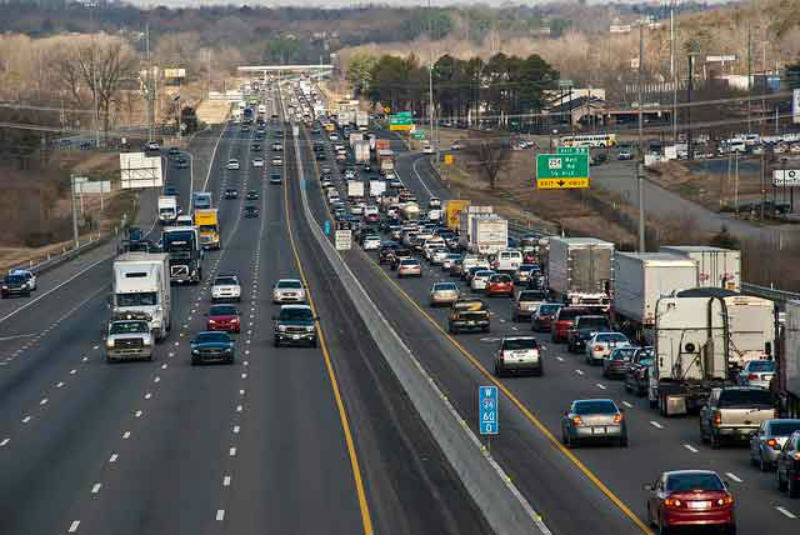By Jason Zasky
The I-24 Smart Corridor Initiative aims to produce more reliable travel times on the most heavily trafficked corridor in Middle Tennessee.
“Since 2005 traffic volumes have increased more than 60 percent on the I-24 corridor near Murfreesboro,” begins Brad Freeze, director of the Traffic Operations Division for the Tennessee Department of Transportation (TDOT), which is responsible for maximizing the capacity of the state’s existing transportation infrastructure. As a result, the I-24 corridor—and in particular the section between Briley Parkway and Harding Place—is now the most heavily trafficked corridor (by commute time) in Middle Tennessee, followed by the corridor from Madison to Nashville on I-65, and the corridor to Nashville on I-40 from Lebanon.
The reasons for the increased traffic on the I-24 corridor are clear. “We’ve seen enormous growth in the Murfreesboro area over the past ten years or so. We have a lot of subdivisions and housing in the area, we have Nissan and a lot of other industry along the corridor, and Amazon just built a facility outside of Murfreesboro,” elaborates Freeze.
And thanks to robust economic growth, the traffic and congestion in the area seems poised to increase in the coming years and decades.
The Middle Tennessee region is expected to grow by at least a million people over the next 20 to 25 years. – Toks Omishaken.
Omishakin is TDOT’s Assistant Commissioner and Chief of Environment and Planning and he says we need to be making ‘smart decisions’ about the future of mobility in Middle Tennessee.
That is, simply adding more lanes to I-24 isn’t the answer. “By the time you get the money to get a project like that on the books—600-800 million dollars—and then you factor in the time period to construct it, you are talking seven to ten years. We can’t afford to wait,” he concludes.
Current Commute Times on the I-24 Corridor “Vary Wildly”
Fortunately for commuters, TDOT has already studied the entire I-24 corridor and solicited public input for how to address traffic challenges. It is now finalizing the details of the I-24 Smart Corridor Initiative, which aims to produce more reliable commute times on I-24 and other major arteries.
“We are trying to address the reliability of the system, meaning … your expectancy of how long it’s going to take to drive the corridor,” begins Freeze. “Right now, the commute times vary wildly, so people can’t plan from day to day. In the morning it could take 45-50 minutes to get to work or 85-90 minutes, and that’s what bothers people the most, not being able to plan,” he continues.
At a high level, TDOT plans to make I-24 an “active, smart roadway,” says Omishakin, “where it’s functioning in such a way that it understands everything that is happening on it, utilizing technology.” So, for instance, as soon as cameras ‘see’ an accident or breakdown, dynamic messaging signs would be utilized to route drivers around the trouble spot and minimize delays.
Another part of the Smart Corridor plan is likely to include ramp metering, where the interchange ramps on I-24 have a red/green signal that tells drivers when to get on the interstate, a solution that has been implemented in many other states.
“The third piece is potentially implementing a bus-on-shoulder (BOS) system where buses are able to utilize the shoulders [of I-24] during very congested periods,” elaborates Omishakin.
Finally, another focus will be on Transportation Demand Management (TDM), which aims to spread out the demand on the system by encouraging major employers to offer flex schedules or allow for more telecommuting, while also encouraging more ridesharing and carpooling.
Taking Cars Off of the Road Using Technology
Managing demand by taking cars off the road seems likely to be a mission-critical effort going forward, as 82 percent of Nashville drivers commuted alone in 2016. “If that continue[s] to be the case, we’re in for a tough, tough time for traffic looking forward,” stated Omishakin in a video interview filmed as he Hytch’d a ride to work using Hytch, an app that helps facilitate carpooling and recently started rewarding users for sharing rides.
“Options like Hytch are going to be key to improving mobility within the state and specifically within this region. To me it’s one of the tools in the toolbox that has a lot of potential to make a difference in mobility,” relates Omishakin, who emphasizes that simply adding more transportation infrastructure isn’t a viable solution.
“If we think we are going to be able to continue to build and that’s going to solve our problems, we’ve got another thing coming,” he concludes. “It would take a long time, we’d have to buy a lot of right-of-way, and the cost would be exorbitant.”



















[…] the increased traffic across Middle Tennessee, especially on busy corridors like I-24, stop and go traffic is a daily […]